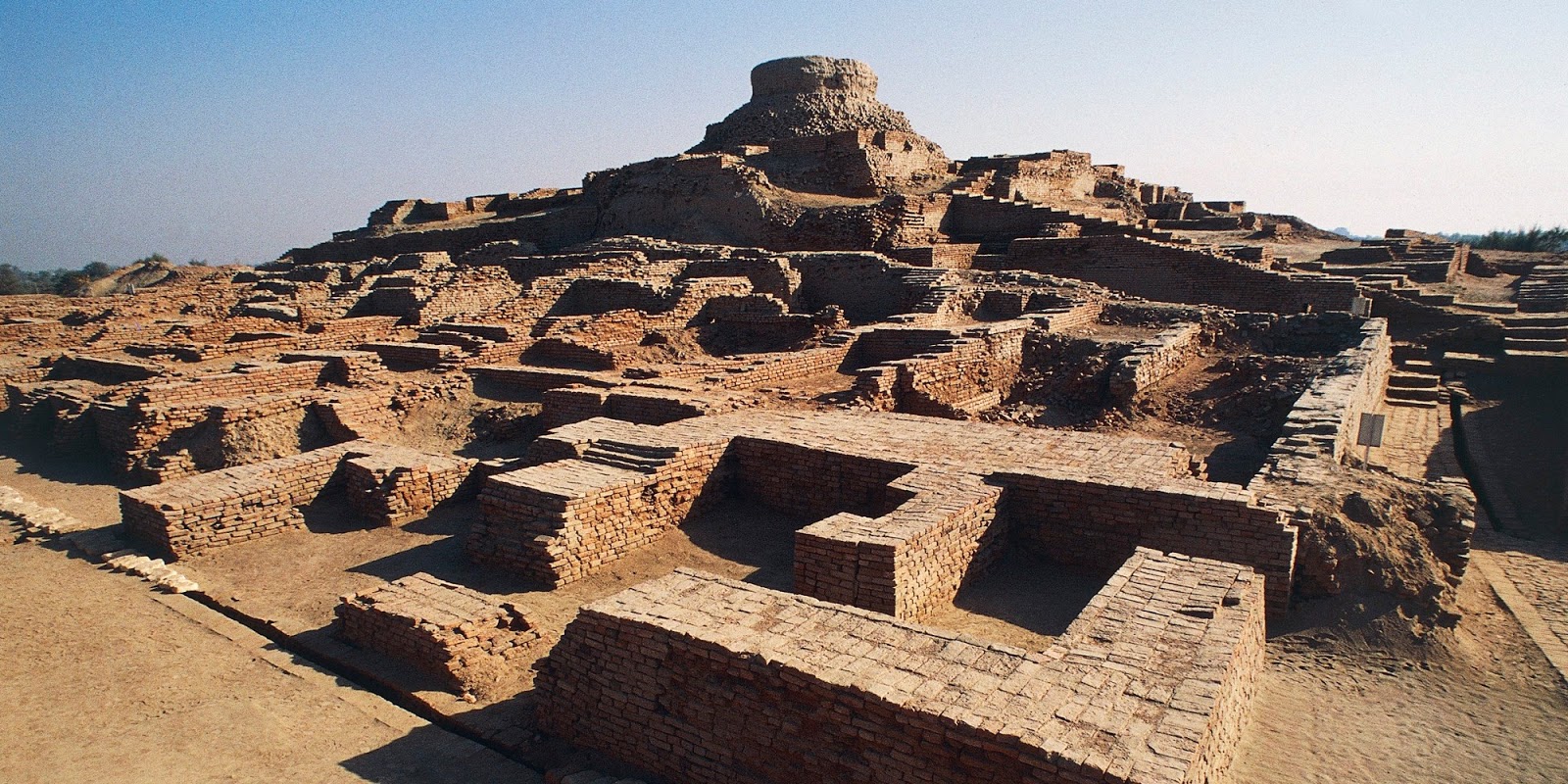Indus Valley Civilization
At the beginning of the XX century. in archaeological science predominant opinion that the birthplace of the productive economy, urban culture, literature, civilization in general, is the Middle East. This area, in the apt definition of the English archaeologist James Breasted, called “Fertile Crescent.” Hence the achievements of culture spread throughout the Old World, to the west and to the east. However, new studies have made serious adjustments to this theory.

The first finds of this kind were made in the 20-ies. XX century. Indian archaeologists Sahni and Banerjee discovered on the banks of the Indus civilization, which existed at the same time the Egyptian civilization, the era of the Pharaohs and the first era of the Sumerians of Mesopotamia in III-II millennium BC. e. (Three of the most ancient civilizations of the world). Before the eyes of the scientists appeared vibrant culture with magnificent cities, the development of crafts and trade, a kind of art. At first, archaeologists have unearthed the largest urban centers of this civilization – Harappa and Mohenjo-Daro. On behalf of the first, and it was called – Harappan civilization. Later found a lot of other settlements. Now there are about a thousand. They have a solid network covered the entire valley of the Indus and its tributaries, like a necklace covering the north-eastern coast of the Arabian Sea on the territory of today’s India and Pakistan.
The culture of ancient cities, large and small, was so bright and peculiar that the researchers had no doubt that this country was not outskirts of the Fertile Crescent of the world, and a hotbed of independent civilization, now forgotten world cities. About them there is no mention in written sources, and only the land retained traces of their former grandeur.
Another mystery of ancient Indian civilization – its origin. Scientists continue to debate whether or not it had local roots and has been brought from the outside, from neighboring Mesopotamia (Mesopotamia), which was carried out intensive trade.
Most archaeologists believe that the Proto-Indian civilization has grown on the basis of local early-farming cultures that existed in the Indus basin and the neighboring district of North Balochistan. Archaeological discoveries reinforce their point of view. The closest to the Indus Valley foothills found hundreds of ancient settlements of farmers VI-IV centuries BC. e.
This transition zone between the mountains of Baluchistan and the Indo-Genetic plain provided the first farmers with everything you need. The climate is favorable to the cultivation of plants for a long warm summer. Mountain streams given water to irrigate the crop and, if necessary, could be blocked by dams for the detention of a fertile river silt and regulation of irrigation fields. It grew wild ancestors of wheat and barley, wandering herds of wild buffalo and goats. Flint deposits provide the raw material for the manufacture of tools. The convenient location offers opportunities for trade relations with Central Asia and Iran to the west and the Indus Valley in the east. The area is like no other approaches for the emergence of farming.